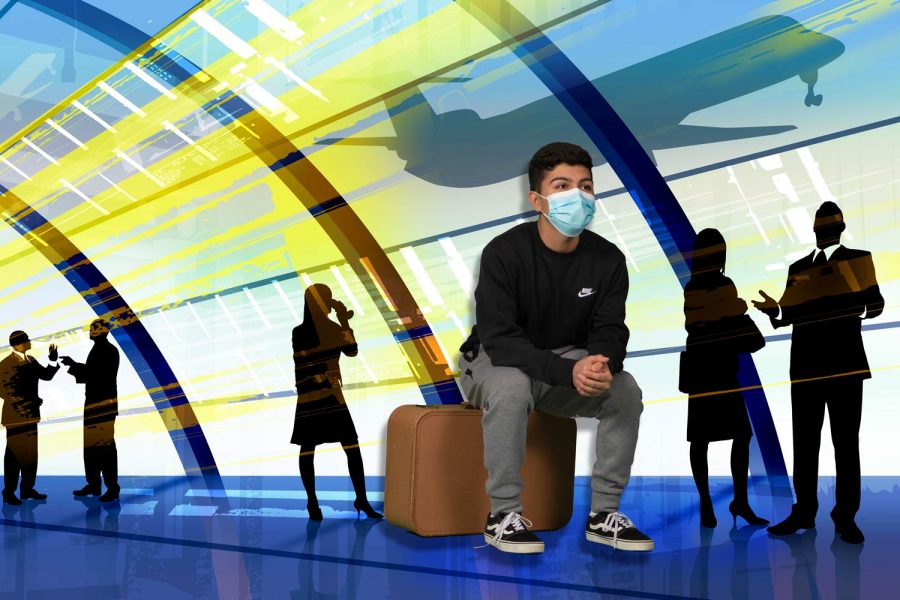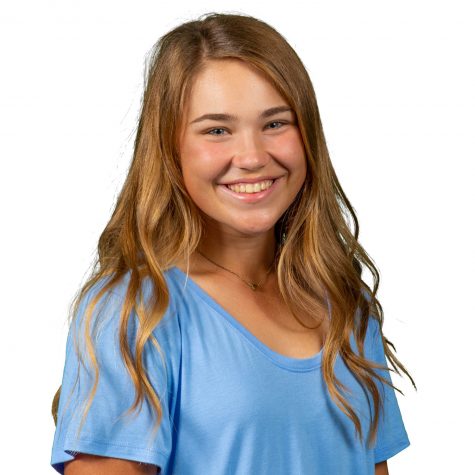Borderline precautions
Student experiences effects of COVID-19 in Mexico
Photo by Braylen Garren
This year, the Olveras had to face many obstacles all circling back to one issue: COVID-19. Because of ongoing safety hazards, the Mexican border has been closed on and off.
February 25, 2021
Every December, senior Alan Olvera and his family pack up and head south, excited to see family and friends from their town, San Miguel de Allende. Their trailer is bulging with luggage and gifts, and their hearts are filled with joy as they trek closer and closer to their long awaited destination.
“We take [the trip] because it’s a way that we get to go and see relatives that we haven’t seen in months,” Olvera said. “And we get to connect with our culture and traditions that we don’t get to see every day here, being in the United States.”
The annual family trip usually runs smoothly. This year, however, the Olveras had to face many obstacles all circling back to one issue: COVID-19. Because of ongoing safety hazards, the Mexican border has been closed on and off.
“The Mexican border was actually being closed, so that was a problem,” Olvera said. “We didn’t know [if] we were gonna [be able] to cross over. It was a big panic thing, but then we got notified that the border was closed only during nighttime, so we could cross to the Mexican side during daylight.”
Once the family had safely crossed, they had to follow Mexican COVID-19 regulations that were put in place to protect them, such as wearing masks and following social distancing. Mexico has implemented a traffic light system that determines how a city exercises COVID-19 precautions. Their destination was among many “red light” towns, with COVID-19 cases rising by the hour.
“I was very cautious being [there],” Olvera said. “Obviously, living here in the United States, you’re [required] to have the mask [and] you wear them all the time here at school [and] outside [school], but let me tell you; life in Mexico is very, very different.”
Olvera identified the biggest difference between the US and Mexico COVID-19 precautions as shutdowns. Mexico City and many other towns surrounding shut down all non-essential stores while the US re-opened stores in June. Since the city the Olvera’s visited was considered “red light” at the time, there were many limitations put on the public, and only essential stores were open.
“When we first got [to Mexico], the basics, like commercial stores, were off limits to the people for the time being,” Olvera said. “Then people need to buy groceries, [so they] started opening that up while applying the security measures.”
Olvera pointed out that by both the U.S. and Mexico implementing mask mandates and temperature checks, there are some similar precautions that are taken to prevent the spread of COVID-19.
“Before entering the city, they would check [my] temperature. [We] had to wear [a] mask while driving just to be able to enter the city,” Olvera said. “They take very many precautions within the city due to its big tourism [and] want to keep people safe.”
Along with the precautions taken while entering the city, many precautions were taken inside the city, just like in the United States.
“There were precautions. Just as if you wanted to go into the store [or] if you wanted to go somewhere, [we had to keep our] mask on at all times,” Olvera said. “They definitely know how to keep the six feet [for] social distancing; they’re very precautious on that as well, it’s one of their main priorities. You go to any of the big cities, they’re very good on safety precautions with COVID.”
This year’s family trip to Mexico was unlike any other because of the obstacle COVID-19 posed. Many families in the town chose to stay inside in fear of contracting the virus.
“In the previous years that we’ve gone, everybody is on the street, relaxing [and] chatting with people that they haven’t seen in months,” Olvera said.
Not only did COVID-19 change the dynamic of the family trip, Olvera noted that the virus had also taken a toll on the town.
“[My town is] one of the biggest tourist cities in Mexico, [so you used to] see different people of different races, ethnicities: white people, Black people, Chinese, Europeans [and] Asian [people],” Olvera said. “The percentage of all tourists and tourism itself [has gone] down drastically [and] definitely has affected the city.”
Even with the fears of contracting the virus, Olvera revealed his eager feelings to see his family in Mexico. He explained the reward outweighed the risk and that he was thankful to have been able to go.
“I understand we’re in a global pandemic. We took as many precautions as we could, but I just really wanted to see my family,” Olvera said. “I hadn’t seen them in months.”
During his stay, Olvera was able to see firsthand how the pandemic has affected other countries and how Mexico is handling the threat of the virus.
“While being able to see them and all, it definitely felt good [to know] that they themselves understand how big [the pandemic] is and how dangerous this is,” Olvera said.

















